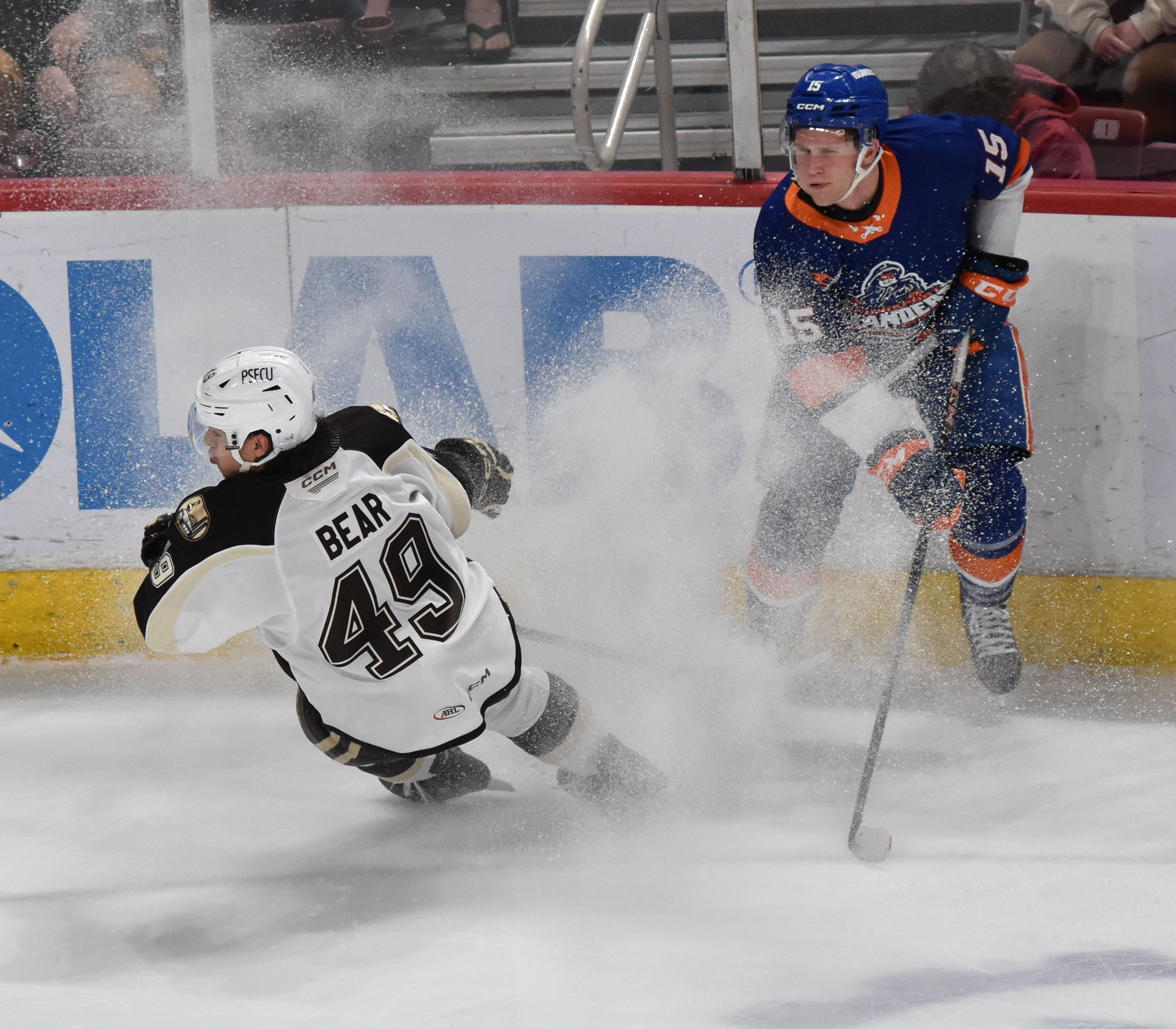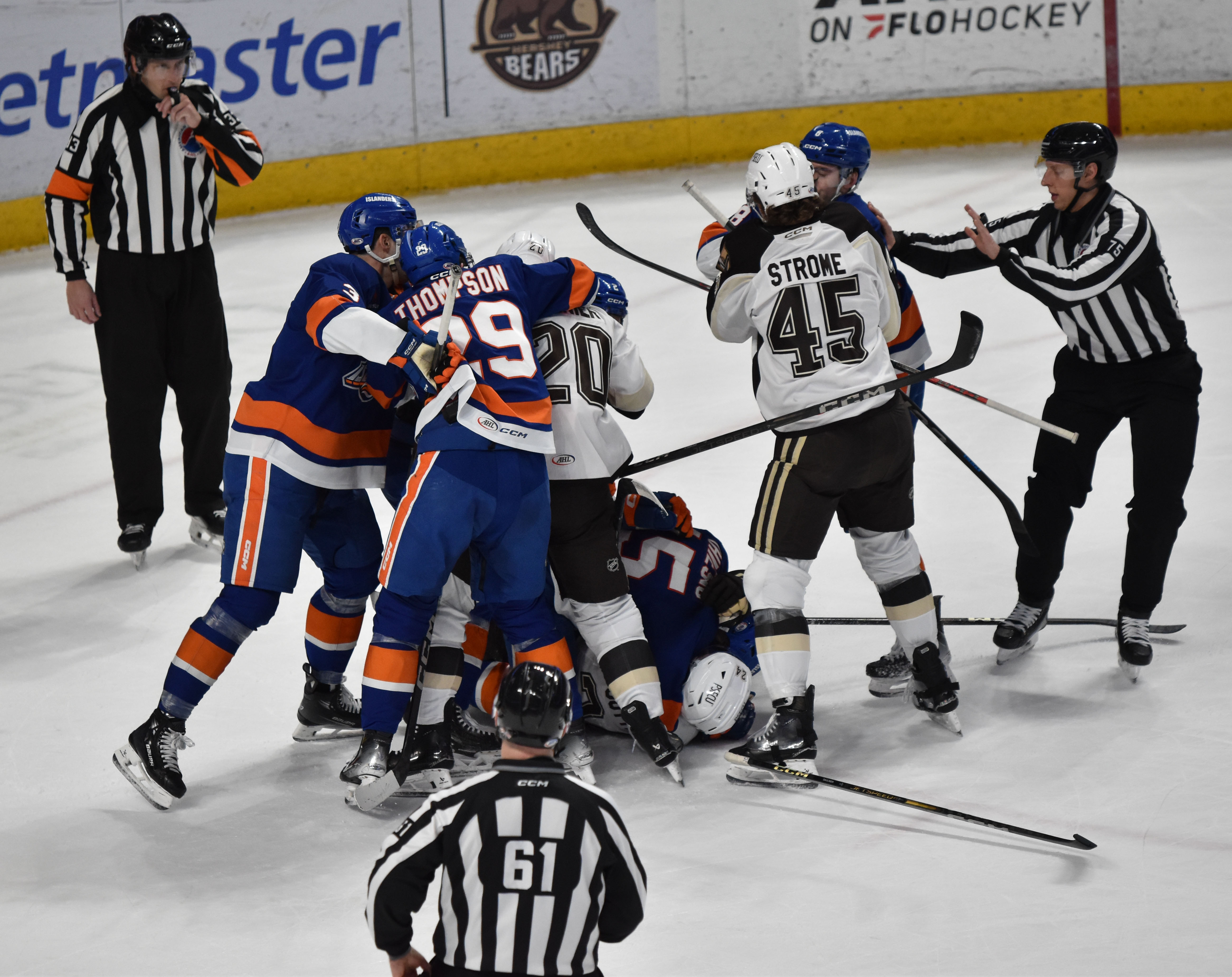Hockey is one of the most enthralling experiences in the USA – for athletes and fans alike. Cities like St. Louis and Chicago have a close attachment to the game. Legendary teams like the Blues and the Blackhawks have a part to play here.

On Saturday, February 1, 2025, the Hershey Bears vs the Bridgeport Islanders. The Bears beat the Islanders by a score of 5-4.
Hockey is also notorious for head injury, holding an unfavorable reputation for being a rough contact sport. This ironic situation has encouraged researchers to persevere in making the game safer. It is imperative for children and sportspersons aspiring for successful careers.
One of the gravest facets of hockey-based injuries is the risk of Chronic Traumatic Encephalopathy. CTE is a degenerative brain condition that may trigger memory problems and cognitive impairment. In abject cases, patients may show signs of Alzheimer’s disease.
Hockey Head Injuries and CTE: What We Know
Healthcare professionals have long suspected a possible connection between sport-based head trauma and CTE. However, new research confirms these fears. In 2024, a study published in JAMA Neurology reported that the risk of CTE rises cumulatively with every additional year you play. In ice hockey, the risk is even higher.
Studies note that injuries usually occur on the side of the head. The severity can be intense even if the head is not the first place of contact.
It paints a worrisome picture for those with a long sporting career. Not only is the probability of developing CTE higher, but they may also get more ill. The neurodegenerative condition can distress players and their loved ones by interfering with day-to-day tasks.
Also, it seems that male players may be more vulnerable. Women’s hockey may be safer since it disallows intentional checking. It lowers the impact and frequency of collisions.
Truth be told, most contact sports have some degree of risk. However, harm caused by malicious behavior from another player or subpar safety equipment is murky territory. In such cases, some players consult a personal injury lawyer to get compensation for medical treatment.
Considering the legitimate risks in hockey, players must distinguish between an accident and purposeful misconduct. TorHoerman Law stresses the need for vigilance to avoid someone’s negligence from profoundly impacting your life. The financial troubles are one thing, but the degree of emotional and mental frustration may not even be quantifiable.
Concussions May Not Cause CTE
Many hockey players worry about concussions resulting from head injuries. For a long time, healthcare professionals attributed CTE to repeated head impact.
However, a Science Medicine study raises doubts about this connection. Some scholars now opine that repetitive head impacts may not cause CTE. At least, the present evidence is not ample to confirm a causative connection.

On Saturday, February 1, 2025, the Hershey Bears vs the Bridgeport Islanders. The Bears beat the Islanders by a score of 5-4.
However, it does not suggest that concussions aren’t a serious issue in themselves. They can cause headaches and confusion. The player must get – and stay – off the field until they fully recover. Although most effects are short-term, some players may have post-concussive symptoms for several months.
Coaches must be vigilant to identify these signs and provide the required support to players. Making players aware of concussions will also make them more cautious. For example, many concussions don’t make the person unconscious. Popular opinion believes otherwise. Knowing the facts makes it likelier that an athlete will detect signs of something amiss in fellow players.
Minimizing CTE Risk Among Hockey Players
Despite the potential for injury, the game continues to be wildly popular in the United States. Seasoned players can feel its benefits on coordination and muscle strength. Indeed, most players may have fulfilling lives without neurological concerns.
However, in light of everything we know now, underplaying the possible risks will be insensible. Instead, why not implement a more conscious and considered approach to the game?
Upgrading Equipment to Prevent Injuries
A powerful way to reduce the chances of getting hurt on the hockey field is through upgraded and future-ready protective equipment for players.
For example, Boston University has a dedicated program to minimize head injuries and concussions. As part of this program, all the players must wear mouthguards. It paves the way for greater adoption of smart mouthguards, which have sensors to measure the impact of a collision.
On that note, one must use helmets with caution. Medical experts warn that wearing a helmet cannot prevent a concussion or a brain injury. However, they advise always wearing one to absorb some of the impact. Moreover, a good-quality helmet can protect your teeth and jaw.
The crucial guideline is never to view a helmet as a permit for aggressive behavior on the field. Although the sport is known for roughness and toughness, personal damage needn’t be unavoidable.
Adjusting Hockey Schedules to Lower Injuries
Some studies have also observed that the playing schedules could affect the odds of getting hurt.
For example, a Cureus report found that reduced off-season training led to higher injury rates. Likewise, high game density and forcing players to resume their original schedules after significant events like COVID-19 also led to adverse results. It points to the need to build well-thought-out schedules considering the players’ health and psychosocial factors.
Does the connection between hockey and possible brain damage spell disdain for the game? It is hardly likely since the sport has been around for generations, bringing families together and revitalizing athletes.
However, it does build a convincing case for tracking inadvertent violence and preventable accidents on the field. Sporting associations must also recognize the risks and integrate preventative steps to keep the game flourishing. In light of the possible health repercussions, caution on the hockey field is non-negotiable.
Photos by Steve.Rusyn@prohockeynews.com


You must be logged in to post a comment.